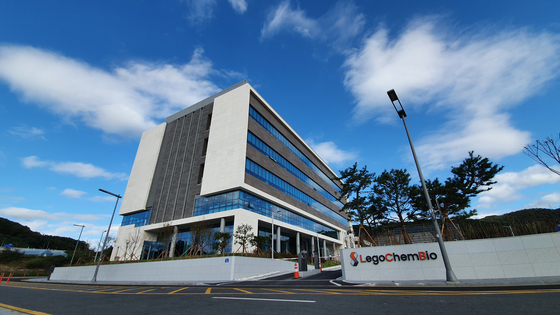In a move reflecting the intricate dance between branding, legal challenges, and market positioning, two Korean biotech companies, LegoChem Biosciences and Helixmith, have announced changes to their corporate identities.

LegoChem Biosciences will soon undergo a transformation to LigaChem Biosciences, following a definitive legal setback against the global toy giant LEGO.
The rebranding comes as a direct response to a trademark dispute initiated in 2015, which concluded last year with the Supreme Court siding with LEGO.
The dispute highlighted the high recognition value of the LEGO brand and its influence over trademark decisions, even in unrelated industries.
The newly christened LigaChem BioSciences aims to enhance its global standing and legal robustness by adopting a name inspired by the Spanish word 'Liga,' meaning league or alliance, signaling a strategic pivot towards unity and collaboration.
The company's abbreviation, LCB, will remain unchanged, providing a thread of continuity amid the rebranding. The official decision is set to be ratified at the upcoming annual shareholders' meeting on March 29.

Meanwhile, Helixmith, a biotech firm founded in 1994 by Professor Kim Sun-young at Seoul National University, is poised to change its corporate name to GenoVine Therapeutics.
This marks the third name change for the company, which originated as ViroMed before transitioning to Helixmith in 2019 to avoid confusion with a similarly named American entity.
The latest renaming to GenoVine Therapeutics is part of a broader strategy to refresh the company's image, as it is currently undergoing business restructuring and management reform following a change in ownership.
Biosolution became the majority shareholder of Helixmith last December, investing 36.5 billion won ($28 million) for a 15.22 percent stake. The name change, set for discussion at the general shareholders' meeting on March 28, reflects an ambition to revitalize the company's public image and align with the new management's vision.
An industry official stressed that these corporate rebrandings have a dual-edged nature of opening avenues for fresh branding and strategic realignment but also entailing significant risks and costs.
"Changing a company's name involves additional costs for marketing concepts, product packaging, and promotional expenses, leading to significant internal and external expenses," an industry watcher told Korea Biomedical Review. "If the results do not appear better than before, there is also the risk of receiving criticism from shareholders."
While refreshing the image and solidifying a new resolve through a name change has its significance, what's more important is the efficient restructuring of the business structure, transparent management, and the outcomes of R&D, he added.
Related articles
- ST Pharm, LegoChem Biosciences team up for ADC linker manufacturing, research
- Samsung Biologics partners with LegoChem Biosciences for ADC development
- LegoChem inks $1.7 billion license-out deal with Janssen for ADC development
- Helixmith's gene therapy fails phase 3 trial for diabetic peripheral neuropathy
- Troubled Helixmith changes ownership again
- Helixmith may face trading suspension due to capital payment delays
- Snack maker Orion emerges as LigaChem Bio's largest shareholder

